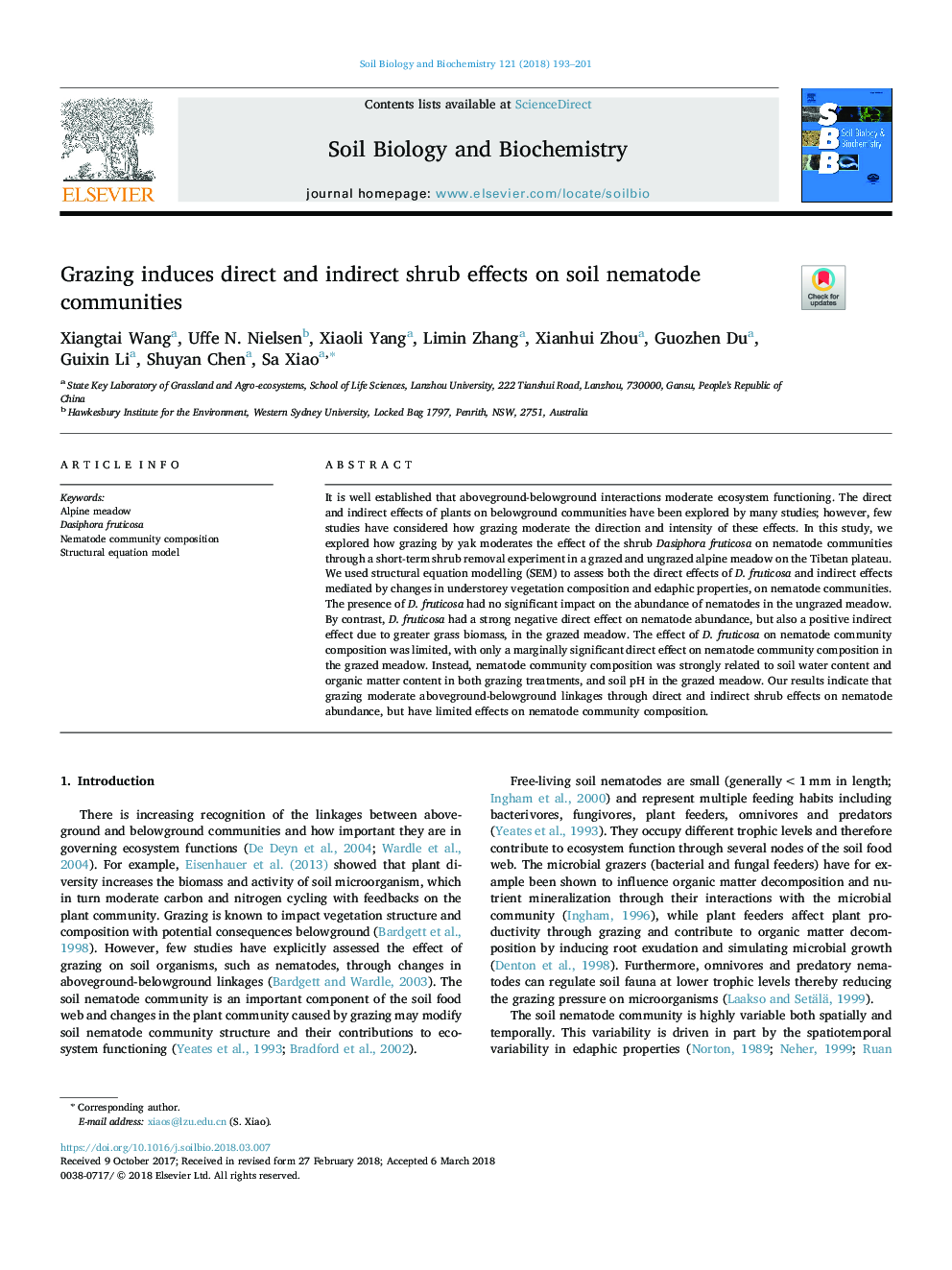| Article ID | Journal | Published Year | Pages | File Type |
|---|---|---|---|---|
| 8362826 | Soil Biology and Biochemistry | 2018 | 9 Pages |
Abstract
It is well established that aboveground-belowground interactions moderate ecosystem functioning. The direct and indirect effects of plants on belowground communities have been explored by many studies; however, few studies have considered how grazing moderate the direction and intensity of these effects. In this study, we explored how grazing by yak moderates the effect of the shrub Dasiphora fruticosa on nematode communities through a short-term shrub removal experiment in a grazed and ungrazed alpine meadow on the Tibetan plateau. We used structural equation modelling (SEM) to assess both the direct effects of D. fruticosa and indirect effects mediated by changes in understorey vegetation composition and edaphic properties, on nematode communities. The presence of D. fruticosa had no significant impact on the abundance of nematodes in the ungrazed meadow. By contrast, D. fruticosa had a strong negative direct effect on nematode abundance, but also a positive indirect effect due to greater grass biomass, in the grazed meadow. The effect of D. fruticosa on nematode community composition was limited, with only a marginally significant direct effect on nematode community composition in the grazed meadow. Instead, nematode community composition was strongly related to soil water content and organic matter content in both grazing treatments, and soil pH in the grazed meadow. Our results indicate that grazing moderate aboveground-belowground linkages through direct and indirect shrub effects on nematode abundance, but have limited effects on nematode community composition.
Related Topics
Life Sciences
Agricultural and Biological Sciences
Soil Science
Authors
Xiangtai Wang, Uffe N. Nielsen, Xiaoli Yang, Limin Zhang, Xianhui Zhou, Guozhen Du, Guixin Li, Shuyan Chen, Sa Xiao,
